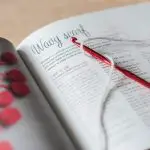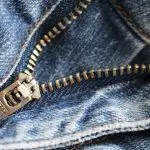Are you ready to take your fabric projects to the next level?
In this article, we’ll show you how to fuse lace to fabric, giving your creations a delicate and elegant touch.
With just a few materials and some easy-to-follow steps, you’ll be able to achieve stunning results in no time.
So grab your lace and fabric, and let’s get started on this creative journey together.
Table of Contents
Materials Needed
To fuse lace to fabric, you’ll need a few materials. Let’s discuss some ideas on how to choose the right lace and achieve a seamless fusion.
When it comes to choosing the right lace, consider the type of fabric you’ll be using. If you have a lightweight fabric, opt for delicate and lightweight lace to match. For heavier fabrics, choose a lace that is slightly sturdier to ensure it can withstand the weight. Additionally, consider the color of the lace. If you want a seamless look, choose a lace color that matches or complements your fabric.
Now, let’s talk about some tips for achieving a seamless fusion. Firstly, make sure to properly prepare your fabric and lace before fusing. This includes washing and ironing both to remove any wrinkles or dirt. Next, use a fabric adhesive or fusible web to attach the lace to the fabric. Apply the adhesive evenly to avoid any lumps or bumps. Finally, use an iron set to the appropriate temperature for your fabric to bond the lace and fabric together. Remember to press firmly but not too hard to avoid damaging the lace.
Preparing the Lace
Start by carefully trimming any excess threads from the lace before you begin attaching it to your fabric. This will ensure a neat and professional finish. When it comes to preparing the lace, there are a few techniques that can help you achieve the best results. The first step is to select the right lace for your project. Consider the style, color, and weight of the lace, as well as its compatibility with the fabric you will be using. Once you have chosen the lace, make sure to wash and press it before attaching it to your fabric. This will help to remove any dirt or chemicals that may be present and ensure that the lace lays flat and smooth. Additionally, you may want to consider using a stabilizer or interfacing to provide extra support and prevent the lace from stretching or distorting during the fusing process. By following these preparation techniques and carefully selecting your lace, you will be well on your way to creating a beautiful and durable lace-fused fabric.
| Preparation Techniques | Lace Selection |
|---|---|
| Trim excess threads | Consider style, color, and weight |
| Wash and press lace | Compatibility with fabric |
| Use stabilizer or interfacing |
Preparing the Fabric
When preparing your fabric, make sure you choose a fabric that is compatible with your selected lace in terms of weight and texture. This is crucial to ensure a seamless and professional-looking fusion of the lace onto the fabric.
Begin by selecting a fabric that matches or complements the lace in terms of weight. For instance, if you have a delicate lace, opt for a lightweight fabric such as chiffon or silk. On the other hand, if your lace is more substantial, consider using a heavier fabric like satin or twill.
Additionally, pay attention to the texture of both the lace and fabric. If your lace has a lot of intricate details, it is best to choose a fabric with a smooth surface to avoid any interference with the lace’s design.
Before fusing the lace, it is important to clean and press the fabric. Ensure that the fabric is free from any dirt, stains, or wrinkles. Gently handwash or dry clean the fabric, following the care instructions provided.
After cleaning, press the fabric using a low to medium heat setting on your iron. This step is crucial to create a smooth and flat surface for fusing the lace. Be careful not to use too much heat or press too hard, as this can damage the fabric.
Once the fabric is clean and pressed, it is ready to be fused with the lace, creating a beautiful and unique fabric combination.
Choosing the Right Fusible Web
In this section, you’ll learn about the different types of fusible web and the heat activation process. Understanding the various options available to you will help you choose the right web for your project.
Additionally, we’ll explore the heat activation process, which is a crucial step in ensuring the web adheres properly to the fabric.
Different Types of Web
You can use different types of web to fuse lace to fabric. There are various options available depending on your desired technique and the type of lace you’re working with.
For delicate lace or lightweight fabrics, a lightweight fusible web is recommended. It provides a secure bond without adding bulk.
If you’re working with heavier lace or thicker fabrics, a medium or heavyweight fusible web would be more suitable. These types of web offer a stronger bond and can better withstand the weight and movement of the fabric.
Using fusible web for lace fusion has its pros and cons. On the positive side, it provides a quick and easy way to attach lace to fabric without the need for sewing. It also allows for precise placement and control.
However, it may alter the drape and texture of the fabric, so it’s important to test a small sample before applying it to your entire project. Additionally, the adhesive can weaken over time, so it may not be the best option for long-lasting or heavily used garments.
Heat Activation Process
To activate the fusible web, simply apply heat using an iron or heat press. This heat activation process allows the web to adhere to the lace and fabric, creating a strong bond. However, there are alternative methods for lace adhesion if you don’t have access to an iron or heat press. One option is to use a hairdryer on high heat setting. Simply hold the hairdryer close to the lace and fabric, moving it back and forth until the web melts and adheres. Another alternative is to use a hot air gun, which provides concentrated heat for quick and effective lace adhesion. Regardless of the method you choose, always follow the manufacturer’s instructions for the fusible web and ensure proper ventilation to avoid any potential hazards.
| Methods | Heat Activation Time | Suitable for Delicate Laces? |
|---|---|---|
| Iron or Heat Press | 15-20 seconds | No |
| Hairdryer | 30-45 seconds | Yes |
| Hot Air Gun | 10-15 seconds | Yes |
Applying the Fusible Web to the Lace
First, make sure the fusible web is completely covering the backside of the lace. This step is crucial to ensure a strong and secure attachment.
To apply the fusible web, start by cutting a piece slightly larger than the lace. Place the web on an ironing board with the adhesive side facing up.
Next, carefully place the lace on top of the web, making sure it is centered and aligned. Gently press down on the lace to secure it to the web.
Then, take a hot iron and set it to the appropriate temperature for the fabric and lace. Slowly and evenly glide the iron over the lace, applying gentle pressure. This will activate the adhesive on the web, fusing the lace to the fabric.
Continue ironing for a few seconds to ensure a strong bond. Once the lace has cooled, check the attachment by gently pulling on it. If it feels secure, you have successfully applied the fusible web.
This technique is great for adding delicate lace details to garments, accessories, or home decor projects.
Positioning the Lace on the Fabric
Now that you’ve applied the fusible web to the lace, it’s time to position the lace on the fabric. This step is crucial to ensure proper placement and adherence. Follow these steps to achieve perfect lace placement and secure the lace to the fabric:
-
Start by laying the fabric on a flat surface, with the right side facing up. This will be the side where the lace will be attached.
-
Carefully position the lace on top of the fabric, aligning it with any pattern or design you want to highlight. Take your time to ensure that the lace is straight and in the desired position.
-
Once you’re satisfied with the lace placement, gently press down on the lace with your hands to secure it in place. Make sure to apply even pressure throughout the lace to ensure a strong bond with the fabric.
-
To further secure the lace, you can use pins or clips to hold it in place while you prepare for the next step. Just be careful not to pierce the lace or the fabric.
Fusing the Lace to the Fabric
Once the fusible web is applied, it’s important to carefully position the lace on the fabric to ensure a secure attachment. Now, let’s dive into the fusing techniques to help you achieve a beautiful lace fabric combination.
To start, make sure your iron is set to the appropriate temperature for the fabric you are working with. This is crucial to avoid any damage or discoloration. Once your iron is ready, place a pressing cloth over the lace to protect it from direct heat. Then, using a gentle pressure, press the iron onto the lace and fabric for a few seconds. Be sure to move the iron in a sweeping motion to cover the entire area.
If you encounter any issues during the fusing process, here are some troubleshooting tips to help you out:
| Problem | Solution |
|---|---|
| Lace not sticking | Increase the iron’s temperature slightly |
| Lace fabric puckering | Reduce the iron’s temperature |
| Uneven fusing | Apply firm pressure and check for any wrinkles or bubbles underneath |
| Lace adhesive residue | Gently remove with a warm, damp cloth |
Finishing Touches and Care Instructions
To complete your project, don’t forget to add the final touches and carefully follow the care instructions to ensure your lace creation lasts for a long time. Here are some care tips and alternative techniques to help you maintain the beauty of your fused lace fabric:
-
Washing: When washing your lace fabric, use a gentle cycle with cold water and mild detergent. Avoid using bleach or harsh chemicals that can damage the delicate lace. If possible, hand wash your lace creation to minimize the risk of snags or tears.
-
Drying: Air drying is the best method for drying fused lace fabric. Lay it flat on a clean towel and gently reshape it to its original form. Avoid using a dryer, as the heat can cause the lace to shrink or warp.
-
Storage: Store your lace fabric in a cool, dry place away from direct sunlight. Avoid folding or hanging the fabric for long periods of time, as this can lead to creases or stretching. Instead, roll the fabric loosely and store it in a breathable bag or container.
-
Alternative Techniques: If you’re looking for alternative techniques to fuse lace to fabric, consider using fusible web or adhesive sprays. These options allow for a temporary bond and can be easily removed or repositioned if needed.
Conclusion
Now that you know how to fuse lace to fabric, you can add a touch of elegance to any garment or accessory. By following the steps outlined in this article, you’ll be able to seamlessly incorporate lace into your projects.
Remember to choose the right fusible web and take care when applying and fusing the lace. With a little practice and attention to detail, you’ll be able to create beautiful and durable lace fabric combinations.
Enjoy your new creations and remember to follow the care instructions to keep them looking their best.
- How Does Ring Spun Cotton Affect Garment Fit and Shape Retention? - August 13, 2024
- What Are the Challenges in Producing Ring Spun Cotton? - August 13, 2024
- Is Ring Spun Cotton Suitable for Plus-Size Clothing? - August 13, 2024






